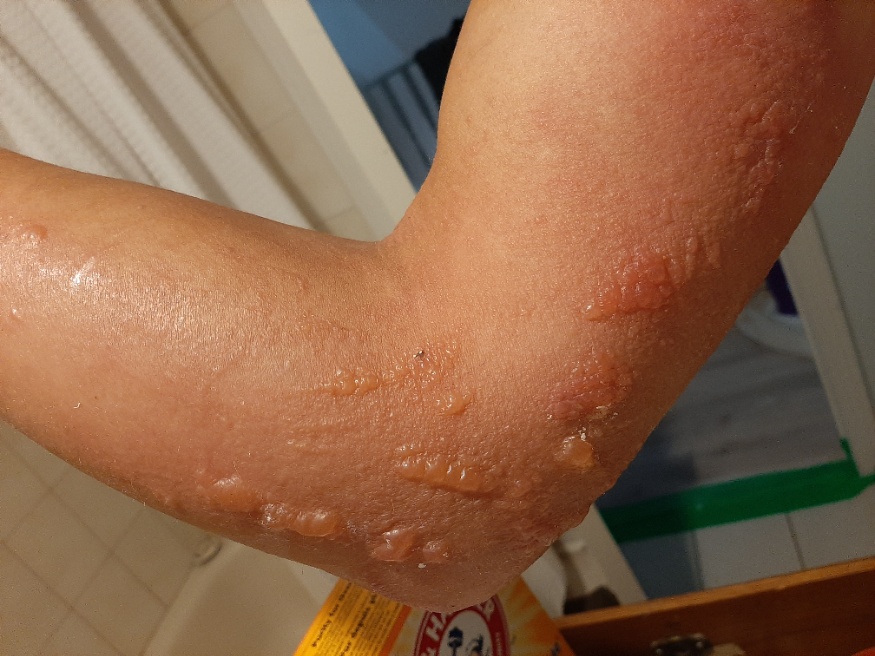Severe Rashes From English Ivy

I contracted a horrible rash recently after pulling out a patch of English ivy during a landscaping job. English ivy is a very common low growing vine or ground cover. It does very well in shade and can even be used indoors. It is however, non-native, invasive, and just fining out it can cause rashes.
At first, my allergic reaction to it appeared as red markings on my arms and it progressed into itchy boils and blisters. It was so severe I even found traces of it popping up on my body where I wasn't even exposed to the plant.
I've had similar reactions in the past from harsh commercial dish soap or poison ivy so when I saw the red markings I knew what I was in for. I never suspected. But I never suspected the vine would do such a thing. It turns out being allergic to English ivy (Hedera helix and similar species) isn't as uncommon as one might think. The plant contains a chemical compound called falcarinol (an alcohol also found in carrots) which some people are allergic to. When in contact with the sap then exposed to sunlight it can cause rashes and blisters.
Besides this vine, some other common garden plants that are known to cause rashes are:
- Aster
- Goutweed
- Gallardia
- Bleeding heart
- daisies,
- Anemones,
- Fleabane,
- euphoria,
- hyacinth roots,
- Gas plant,
- Hops,
- Members of the Ranunculus family (clematis,
- hellebore, anemone, Pulsatilla)
Careful around English ivy if you don't know if you're allergic. I'll be sure to wear long sleeves next time!
https://www.poison.org/articles/skin-problems-from-outdoor-plants
https://www.thespruce.com/plants-that-cause-skin-irritations-4148484